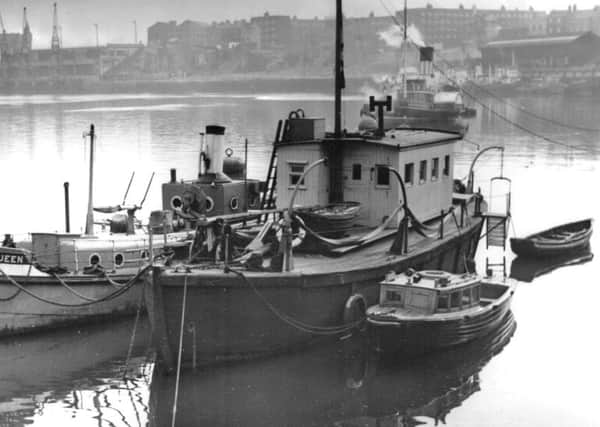ON THE WATERFRONT: Floating HQs for river police


With the force vacating Bodlewell Lane Police Station in 1925, a resourceful solution allowed the river police’s continued presence within the heart of waterfront activity.
A redundant manual fire float dating from the 1840s had long been used as a floating depot for the fire steamer Fire Queen.
Advertisement
Hide AdAdvertisement
Hide AdShe was moored off the steps (part of which survive today) opposite the passageway between Scotia Quay and SP Austin and Son’s shipyard.
Stripped of her pumping equipment and used to moor patrol boats and fireboats alongside, the elderly craft was now transformed into a base for the police.
While there were previously two floating manual engines - Wear Engines A and B - the former is believe to have survived to become the floating police station.
Although officially known as the River Station, the craft was often warmly referred to as the Manual. Built by Tilley & Co of London in 1841, she had been towed to the Tyne in 1854 to help combat the Great Fire of Newcastle and Gateshead.
Advertisement
Hide AdAdvertisement
Hide AdDuring the early hours of May 16, 1943, three police officers on board had a remarkable escape during a German air raid. A high-explosive bomb dropped in the river only 30 feet away caused Manual and the craft alongside to pitch so violently they almost capsized.
The River Station’s superstructure and deck fittings were seriously damaged, while one side of her deckhouse was blown out. Moreover, her timbers were so badly shaken by concussion, that she began to take in water.
Although temporarily repaired, there was an urgent need to replace the timeworn station.
After exploring a number of options, including land-based premises, it was decided to purchase a 70-foot lighter from clay merchants Pike Bros of Wareham, Dorset at a cost of £1,250.
Advertisement
Hide AdAdvertisement
Hide AdNamed Pikes’ No 10, the barge had been used to carry armaments during the war, later being engaged in diving operations. She arrived in the Wear on October 26, 1948, in tow of the Risdon Beazley motor tug Topmast No 10.
The lighter was slipped at John Crown and Sons’ Strand Slipway on March 15, 1949 to undergo alterations costing around £1,100, which included fitting a large cabin and converting the hold into a workshop and store.
Pikes’ No 10 entered service on May 12, 1949, replacing the old Manual, which was towed upriver the same day to be broken up at South Hylton.
She completed another 12 years service until the River Wear Watch was disbanded on October 1, 1961. Moved into Hudson Dock on November 15 to be sold, her eventual fate remains unknown.